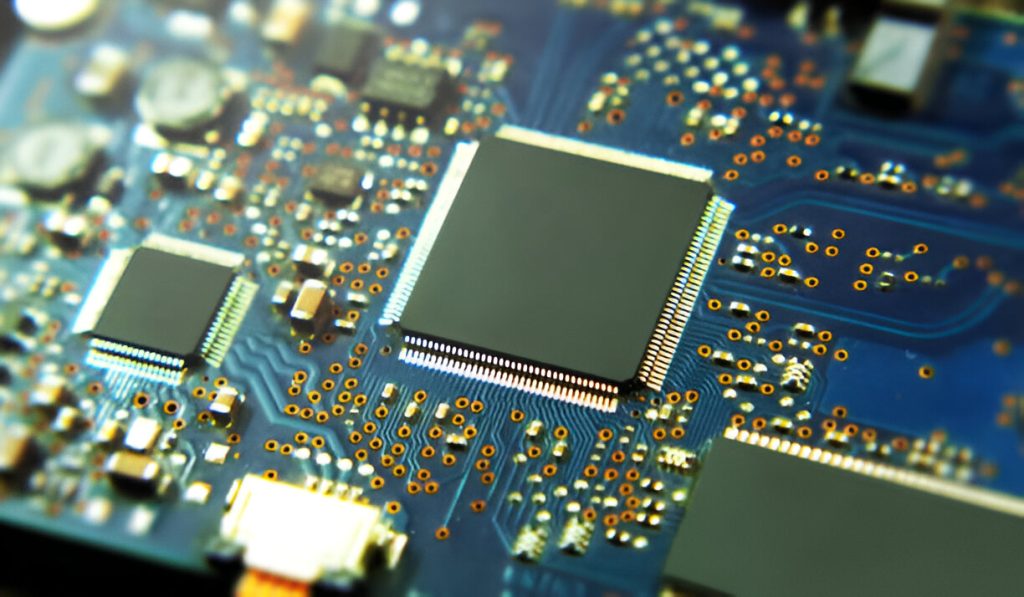
In the ever-evolving world of electronics, mastering the art of circuit design and analysis is more crucial than ever. Whether you’re a seasoned engineer or a budding innovator, understanding the core skills of creating electronic products can set you apart from the competition.
From crafting complex schematics to analyzing circuit performance, the journey from concept to creation is filled with challenges and opportunities.
Let us discuss the essentials of electronic circuit design and discover how mastering these techniques can transform your ideas into cutting-edge products through successful design and analysis.
Importance of Circuit Design for High-Quality Electronics
Circuit design is crucial for developing high-quality electronic products. It lays the foundation for how components interact and function together.
The global electronic design automation market was valued at USD 16.06 billion in 2023 and is projected to expand at a CAGR of 9.40% over the forecast period, which extends from 2024 to 2032, reflecting the growing importance of effective circuit design in enhancing reliability and performance.
A well-designed circuit ensures smooth integration of components, boosting reliability and performance. Effective voltage, current, and signal integrity management minimizes errors, leading to excellent stability and customer satisfaction.
Additionally, it ensures compatibility and scalability, enabling easy integration with other technologies to facilitate future upgrades and feature additions.
This adaptability in circuit design is crucial for staying competitive and meeting evolving consumer demands, directly impacting electronic products’ quality, performance, and flexibility.

What Are the Key Steps in Designing a Functional Electronic Circuit?
Electronic circuit designing is a structured process with several critical steps to ensure a functional and reliable circuit, transforming theoretical concepts into practical, working electronics. By following these key steps, designers can systematically address potential challenges and achieve a successful outcome in their electronic circuit design endeavors.
Define the Circuit Requirements
In electronic circuit designing, the first step is to define the circuit requirements. This involves identifying the specific goals and performance criteria the circuit must meet, such as voltage levels, current capacities, and operational functionality.
PCB stack-up design for high-performance circuit boards further refines this process by addressing how the PCB’s physical layout impacts performance. Clearly outlining these requirements provides a solid foundation for the entire design process, ensuring the circuit meets its intended purpose and specifications.
Create a Schematic
Once the requirements are established, the next phase in electronic circuit designing is to create a schematic diagram.
This diagram visually represents the circuit’s components and their connections, serving as a detailed blueprint for the circuit layout. A well-drafted schematic is crucial for organizing the design and ensuring all elements are correctly arranged to achieve the desired functionality.
Choose Components
Component selection is a pivotal step in electronic circuit designing. It involves choosing the appropriate parts, that best meet the circuit’s requirements, such as resistors, capacitors, and transistors. The right components are essential for ensuring the circuit’s performance, reliability, and efficiency, as each element affects the overall operation and stability of the electronic circuit.
Simulate the Circuit
Before finalizing the design, simulating the circuit using specialized software is essential. Simulation allows designers to test and analyze the circuit’s behavior in a virtual environment, helping to identify and resolve potential issues before physical assembly.
This step is crucial for optimizing the design and ensuring the circuit functions correctly under various conditions. Simulating the circuit allows designers to adjust and improve performance without costly or time-consuming prototypes.
Build and Test a Prototype
The final stage in the design process is building and testing a prototype. This involves assembling the circuit components on a physical board and conducting tests to ensure the circuit performs as expected. Prototyping allows for practical evaluation and fine-tuning of the design, addressing any issues that arise and confirming that the final circuit meets all design requirements and functions reliably.
How Can You Efficiently Simulate and Test Circuit Designs?
Efficient simulation and testing ensure electronic circuits work as intended before production. Designers can use advanced tools and techniques to identify issues, optimize performance, and effectively validate designs.
Here’s how to streamline this process for reliable and accurate results.
Use Simulation Software
Using specialized simulation software is crucial in efficiently simulating and testing circuit designs. These tools create a virtual environment to model and analyze the circuit’s behavior under various conditions.
This allows designers to predict real-world performance, identify potential issues, and make necessary adjustments before physical implementation.
Validate Design with Models
To ensure simulation accuracy, validate the design with detailed and precise models of components and subsystems.
Unveiling secrets of high-quality PCB manufacturing is crucial in quality assurance. It ensures that the physical PCB closely matches the simulated design. Validating the design with these models helps ensure that the simulation results are reliable and reflect the circuit’s actual performance.
Run Stress Tests
Running stress tests is crucial in simulating and testing circuit designs. These tests push the circuit to its limits with extreme conditions like high voltages, currents, or temperatures, revealing potential weaknesses. Identifying and addressing these issues helps enhance the circuit’s robustness and reliability.
Perform Timing and Frequency Analysis
Timing and frequency analysis are crucial for assessing circuit performance, especially in high-speed or complex designs. Analyzing signal timing and frequency response ensures the circuit meets performance standards and operates efficiently under various conditions.
Rework Based on Results
Revising the circuit design based on the results after simulation and testing is important. This includes making modifications to fix issues, such as adjusting component values or improving the layout. Reworking the design ensures the final circuit meets performance criteria and functions reliably in real-world applications.
What Tools and Software Are Best for Circuit Analysis?
Choosing the best software and tools from various options can streamline your workflow, provide efficient analysis, accurate results, and enhance design quality.
Here are seven top tools for electronic circuit designing and analysis.
Altium Designer
Altium Designer is a comprehensive tool for electronic circuit design. It features advanced schematic capture, PCB layout, and 3D visualization.
It offers a unified platform for design and simulation, making it ideal for professionals needing high precision and flexibility. Its robust analysis tools and extensive component libraries make it a popular choice for complex circuit designs.
KiCad
KiCad is a popular open-source tool for electronic circuit designing. It offers schematic capture, PCB layout, and 3D modeling. Its free-to-use model and extensive community-supported libraries make it a versatile choice for hobbyists and small businesses.
OrCAD/ Allegro
OrCAD and Allegro by Cadence are industry-standard electronic circuit designing and analysis tools. OrCAD excels in schematic design and simulation, while Allegro is known for high-end PCB layout and analysis. Together, they provide a comprehensive suite for complex and large-scale projects.
Proteus
Proteus is a versatile tool for electronic circuit designing, combining circuit design and real-time simulation. It’s ideal for education and prototype development, allowing designers to test microcontroller-based circuits with traditional components.
LTspice
LTspice, developed by Analog Devices, is a highly accurate simulation tool for analog circuits. It is widely used for power supply design and precise analysis of circuits involving linear components like resistors, capacitors, and inductors. This robust platform suits novice and experienced designers seeking reliable analog simulations.
TINA-TI
TINA-TI is a free, simple-to-use simulation tool provided by Texas Instruments. It is tailored for beginners and intermediate users looking to simulate basic analog, digital, and mixed-signal circuits. TINA-TI supports various Texas Instruments components, making it an excellent tool for prototyping designs incorporating TI parts.
EasyEDA
EasyEDA is a cloud-based tool offering an intuitive interface for schematic capture, PCB design, and simulation. Its online platform facilitates easy collaboration and access from anywhere. With a rich component library and seamless integration with PCB manufacturers, EasyEDA provides a streamlined, user-friendly experience for managing circuit designs.
Why Choose PCBLOOP for Your PCB Manufacturing and Assembly Needs?
PCBLOOP is ideal for your PCB manufacturing and assembly needs due to its commitment to high-quality production, fast turnaround times, and cost-effective solutions. They offer a comprehensive range of services, including multilayer PCB fabrication, flexible PCB production, and full assembly options with advanced capabilities like surface-mount technology (SMT) and through-hole assembly.
With a strong focus on precision and reliability, PCBLOOP utilizes cutting-edge equipment and stringent quality control processes to ensure that every board meets the required specifications. Their customer-centric approach, transparent pricing, and ability to handle small and large-scale projects make them a trusted partner for businesses seeking efficient and reliable PCB solutions.
Conclusion
Mastering electronic circuit design and analysis is essential for creating high-quality, functional electronic products. By honing these core skills, designers can develop innovative solutions and ensure optimal performance.
For reliable PCB manufacturing and assembly services to bring your designs to life, visit PCBLOOP for top-quality and cost-effective solutions.